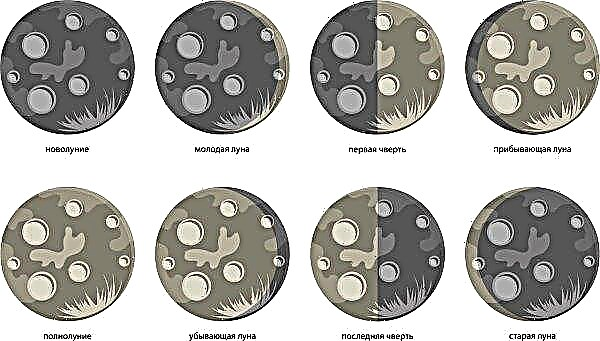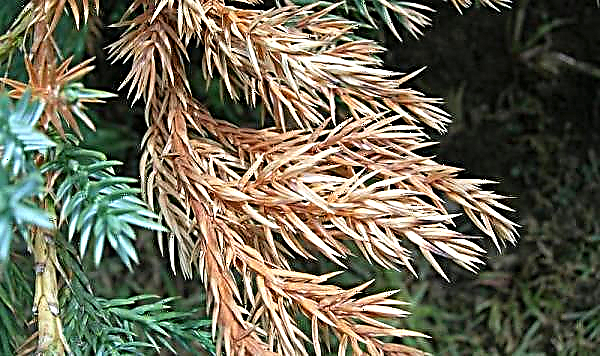A well-groomed pond can decorate any site, but its depth decreases every year, and the bottom needs periodic cleaning. Therefore, in order to maintain the attractive appearance of this decorative element of landscape design, it is necessary to regularly carry out cleaning measures, deepen the reservoir, and also take care to strengthen its shore.
Why deepen the pond
Any reservoir over time needs to be cleaned, which is often combined with a recess. This procedure is the removal of accumulated bottom sediments, which not only lead to water pollution, but also entail shredding of the pond.

The main reasons for the deepening of the reservoir:
- natural sediment accumulation at the bottom - Over time, garbage, plant debris settles there;
- coastal creep - if it is not properly strengthened, then the soil gradually sinks into the water, soaks and settles at the bottom;
- formation of a thick layer of silt - leads to a rise in the level of the bottom and shredding of the pond;
- the need to launch fish - in this case, the depth should be at least 3-4 m;
- arrangement of the swimming area - to make it comfortable to enter the water and swim, the depth of the pond is gradually increased as you move away from the coast;
- creation of the ability to move around the pond by boat or boat - so that water transport can move freely on water, the depth should be at least 3 m.
Did you know? One of the cleanest reservoirs in the world is Lake Masu, located in Japan. The water in it is so clear that on a sunny day it is visible to a depth of 40 m.
How to deepen and clean a pond
Over time, the remains of rotting algae, sludge and garbage settle on the bottom of the pond, resulting in the pond becoming polluted and its depth decreasing. In this case, the accumulated sediment must be removed.
The following signs indicate the need for a cleaning procedure:
- water becomes cloudy, changes color - this occurs as a result of the vital activity of microorganisms that feed on organic sediments at the bottom, as well as with a large number of suspensions in the reservoir (clay, sand, soil);
- the pond is overgrown with plants - with a decrease in depth, the water column warms well by the sun, which favorably affects the development of vegetation;
- foul smell - In a dirty pond, bacteria and fungi actively multiply, making the water musty.
 Cleaning and deepening can be carried out with pumping water and without it. In each of the two cases, special devices are used.
Cleaning and deepening can be carried out with pumping water and without it. In each of the two cases, special devices are used.
Cleaning without draining water with a dredger
You can clean the pond without pumping water out of it using a dredger. This method is rationally applied in cases where there is a lot of water in the pond and its discharge is quite laborious. A dredger is a dredging device that absorbs sediment from the bottom along with a certain amount of soil, and then discharges it to land through a system of pipelines.
Did you know? Laguna Colorado Lake, located in Bolivia, has red water. This color is due to the presence of a large number of microscopic algae.
When cleaning a reservoir using a dredger, the following devices are involved:
- metal cutters with electric or hydraulic drive - in the process of loosening the bottom of the pond;
- dredge pump - absorbs loosened soil and sediments from the bottom;
- pipeline - through it, a mixture of water and sediments comes from the bottom to the land surface;
- silt cards (sedimentation tanks) - land areas bounded by an earthen rampart for discharge of bottom sediments;
- discharge wells - are in a settler, serve for removal of the water clarified from suspensions;
- sediment collection and transport vehiclesremaining in the sump after water purification.
Video: How to clean and deepen a pond
The main stages of work consist of the following activities:
- Inspection of the bottom. Extraction of large garbage, metal objects.
- Catch of fish and other inhabitants of the reservoir, their movement in aquariums or other ponds.
- Preparation of silt maps. Conclusion to them of pipes for draining a mixture of water and bottom sediments.
- Delivery of a dredger to a reservoir, installation of a piping system.
- Starting the pump to clean the pond from bottom sediments.
- Transportation of water-soil mixture through pipes to sludge cards.
- The sedimentation of the liquid mass. Separation of clean water and its discharge through a discharge well.
- Removal and removal of sludge remaining at the bottom of the sump.
- Running fish and other inhabitants in a cleared pond.
Important! The bottom sediments extracted from a reservoir can be used as fertilizer, but only after a sanitary examination. When toxic substances are detected, such a sediment needs to be buried.
Cleaning with drainage of a motor pump and an excavator
To clean small ponds, it is recommended to first drain the water in a previously prepared place. As a result of such a procedure, access directly to the bottom appears, which is cleaned of contaminants manually or using special equipment.
In this case, such devices will be required for cleaning:
- motor pump or industrial diesel pump - provides complete pumping of water from the pond;
- pipeline - one end is lowered to the bottom of the reservoir, and the second is connected to the pump;
- crawler excavator - removes the surface soil layer along with bottom sediments;
- dump trucks - export the mixture from soil and sediment from the site.

The main stages of work include the following:
- Installation of a motor pump and pipeline. Pumping water to a previously prepared place.
- Drying the bottom for several days.
- Removing the surface soil layer along with bottom sediments and vegetation using an excavator bucket.
- Loading the mixture from soil and sediment onto dump trucks, transportation to the destination.
- Filling the pond with clean water. Restoring the natural biological balance of a body of water by adding several buckets of water from a natural lake or river to it.
- Planting, stocking the pond.
Features of shore strengthening
When arranging a pond on a site, care must be taken in advance to strengthen its shores so that they do not slip into the water.
There are several ways to carry out this procedure, and the choice of a specific one depends on such factors:
- soil type - how dense and heavy it is, whether it contains sand or clay;
- the angle of the shore in relation to the water - at the steep shore the upper part will crumble, and at the gentle - the lower;
- the lifetime of the reservoir - will allow you to choose the best material to strengthen the coast;
- the location of areas with crumbling soil - they must be strengthened in the first place;
- the functions of the pond and its location - at the decorative reservoir, the banks can be steep, and if it is intended for swimming, then gently;
- climate features - in order to choose the suitable material for strengthening the coast, annual precipitation and the depth of freezing of the soil are taken into account.

The main ways to strengthen the shore of the pond with your own hands:
- Using a geogrid. It is a strong anti-erosion network with large cells, which fits on geotextiles. The geogrid is fixed using special fasteners, and its cells are filled with crushed stone or cement mortar.
- Installation of gabions. You can make them yourself by buying a roll of galvanized mesh coated with PVC. Boxes are made from it, which are installed along the coast, and then connected to each other and fix the angles. The inner space of the gabion is filled with gravel, which gives the coast a decorative appearance. Over time, the gaps between the stones fill with soil, giving the structure additional strength.
- Eco-fixation with plants. This method of shore strengthening is environmentally friendly, helps to preserve the natural appearance and involves planting trees and shrubs with a powerful root system that penetrates the soil to a great depth. When using this method of strengthening, willow, sedge, sea buckthorn, and red currant are planted on the shore of a reservoir.
- Piling. It is used to strengthen the steep banks of a large pond, and wood or plastic can be used as material. At the same time, piles are driven vertically along the coast, being located close to each other. This procedure is performed using special equipment and is quite time-consuming.
Important! Before you carry out the strengthening of the coast, you need to carefully align its slope. This is necessary so that the finished structure fits as tightly as possible to the soil, keeping it from slipping into water.
Independently deepen the pond, cleaning its bottom from mud sediment, even at home. Using the information presented in the article allows you to choose the most convenient way to clean the pond, and the proper strengthening of the shore reduces the need for frequent procedures and gives the pond a decorative appearance.












